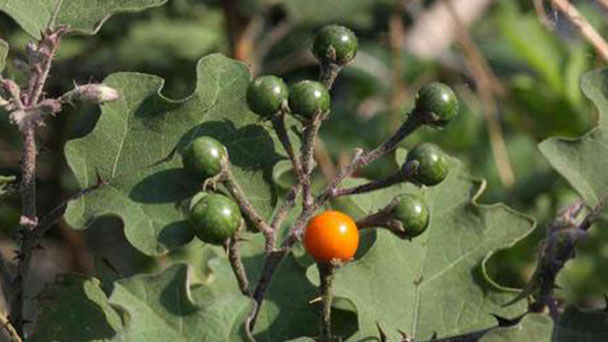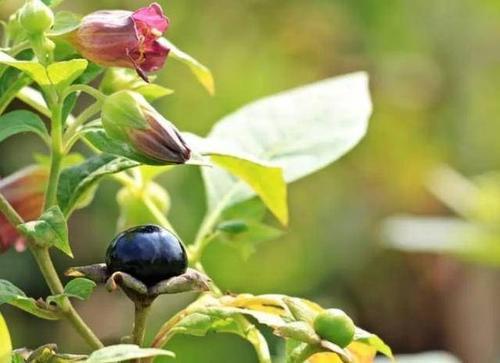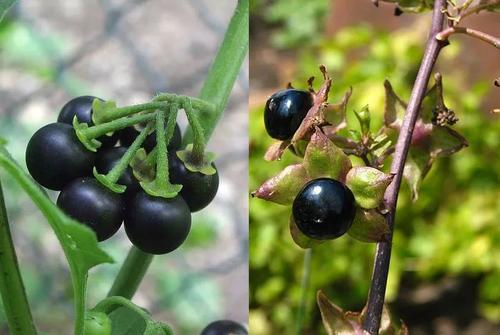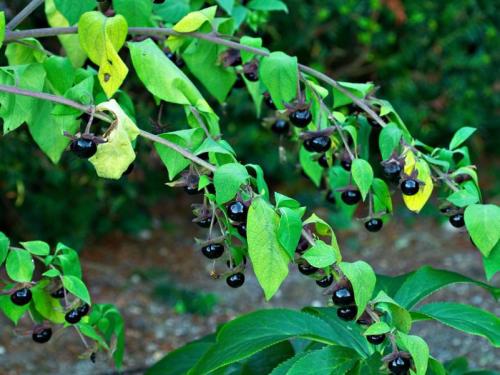Belladonna (Atropa belladonna) profile
Written by Maggie
Apr 16 2021

Belladonna (Atropa belladonna) is a plant of the genus Belladonna in the Solanaceae family. In a broad sense, it refers to all or part of the plants of the wild solanaceae or even the whole solanaceae group.
The plant of Belladonna is a perennial herb with many branches and hollow stems. Leaves are alternate, mostly fusiform or ovate; The fruit is spherical and yellow or orange in color.
Belladonna contains a variety of alkaloids and is highly toxic. Belladonna grows well in temperate, humid climates. Belladonna originated in Europe and is now found on every continent except Antarctica.
Belladonna picture

Belladonna info
| Botanical Name | Atropa belladonna |
| Common Names | Belladonna, deadly nightshade |
| Plant Type | Perennial |
| Sun | Full sun, part shade |
| Flower color | Purple/lavender |
| Native Area | England through central and southern Europe, North Africa to Iran |
| Mature size | Three to four feet height and width |
Morphological characteristics of Belladonna
Belladonna is a perennial herb, or annual due to cultivation, 0.5-2 m high. Roots are stout, cylindrical. Stem is proximally simple, purplish, distally forked, shoots green, glandular hairy, falling off when old. Leaves are alternate or 2 unequal in size on upper branches, petiole up to 4 cm long, glandular hairs when young; Leaves are ovate, ovate-elliptic or elliptic, 7 -- 25 cm long and 3 -- 12 cm wide, apically acuminate or acute, basally cuneate and descending to petiole, dark green or green above, pale green below, pubescent along veins on both surfaces.
Flowers of Belladonna are drooping, pedicels 2-3 cm long, densely white glandular hairs; Calyx ca. is 1/2 of corolla, lobes triangular, 1-1.5 cm long, apex acuminate, glandular hairy, slightly enlarged after anthesis, fruit starlike spreading outward; Corolla is cylindrically campanulate, yellowish-green lower part, lavender upper part, 2.5-3 cm long, ca. 1.5 cm in diameter, tube slightly enlarged in middle part, 5-lobed, lobes obtuse at tip, flowers inverted when open, longitudinal veins raised outside, glandular hairs, inner tube with hairs at base; Filaments are pubescent at lower end, arched downward at upper end, ca. 1.7 cm long, anthers elliptic, yellow; Flowers are coiled at base of ovary; Style ca. is 2 cm long, stigma greenish. Berries if Belladonna are globose, 1.5-2 cm in diameter, purplish black when ripe, smooth, with purple juice. Seeds are oblate neuroform, brown, 1.5-2 mm long, 1.2-1.8 mm wide.
Belladonna origin and habitat
Belladonna is native to central, western and southern Europe. There are introductions and cultivation in the north and south of China. It is suitable for sandy loam with abundant sunshine, convenient drainage and irrigation, and loose and fertile soil with pH value of 5.5-9.0.

Toxicity of Belladonna
All components of the plant—leaves, flowers, fruits, and roots—are enormously toxic, now not solely when ingested however additionally when the toxins enter the physique via open wounds, cuts, or abrasions. In healthy skin, contact with any section of the plant can cause extreme allergic reactions.
Belladonna consists of poisonous tropane alkaloids such as atropine, scopolamine, and hyoscyamine. Symptoms of belladonna poisoning are dilated pupils, fast heartbeat, delirium, vomiting, hallucinations, and respiratory failure main to death.
Due to their moderate resemblance with wild safe to eat berries, such as blueberries and blackberries, the purplish-black, sweet-tasting fruit of belladonna pose a precise hazard of being ingested. As little as two berries for a baby and ten berries for a grownup can be lethal.
Belladonna is additionally tremendously poisonous and deadly to dogs, cats, horses, and different domesticated animals. It is now not poisonous to birds and different animals.
Belladonna main value
Medicinal use: roots and leaves of Belladonna contain Hyoscyamine, Atropine, Scopolamine and Belladonna, etc. Leaves are antispasmodic and analgesic drugs; The root cures night sweat, and has the effect of dilating pupils.

Latest Updated
- Benefits of Bugleweed - 7 Science-backed Health Benefits
- Bugleweed Dangers & Side Effects - Is It Poisonous?
- How to Plant Evergreen Trees - What You Should Know
- When to Plant Evergreens - Grow Guide for Evergreen Trees
- 12 Wonderful Evergreen Shrubs for Your Garden
- 12 Popular Evergreen Plants with Pictures for Beginners
- When And How To Prune A Lilac Bush Like a Pro
- How to Grow & Care for Lilac Vine (Hardenbergia Violacea)
- Japanese Lilac Tree (Syringa Reticulata) Care & Propagation Guide
- Shumard Oak Pros and Cons - What to Know
Popular Articles
- Winter maintenance of Antirrhinum Majus
- How to Grow Terminalia Mantaly Tree
- How to Grow and Care for Crossostephium Chinense
- How to grow Antirrhinum Majus in spring
- Peristeria Elata (Dove Orchid) Profile: Info & Care Guide
- Underwatered Snake Plant (Sansevieria Trifasciata) - Signs And How To Fix
- How to Care for Brazilian Jasmine Plant (Mandevilla Sanderi)
- How to Grow & Care for Graptopetalum Purple Delight in Summer
- Rosa Chinensis (China Rose): Plant Growing & Care Tips
- How to Care for Baby Sun Rose (Aptenia Cordifolia)